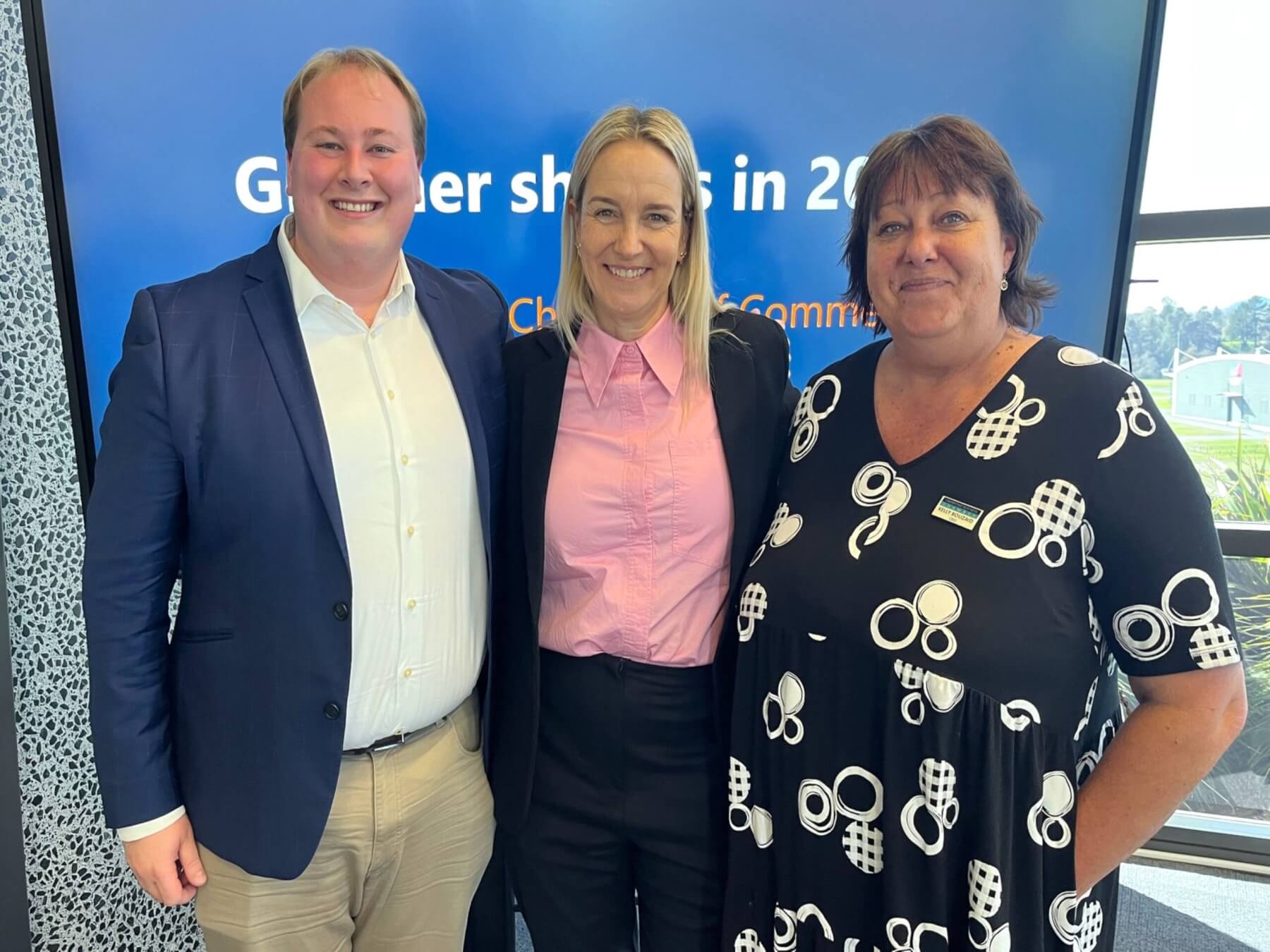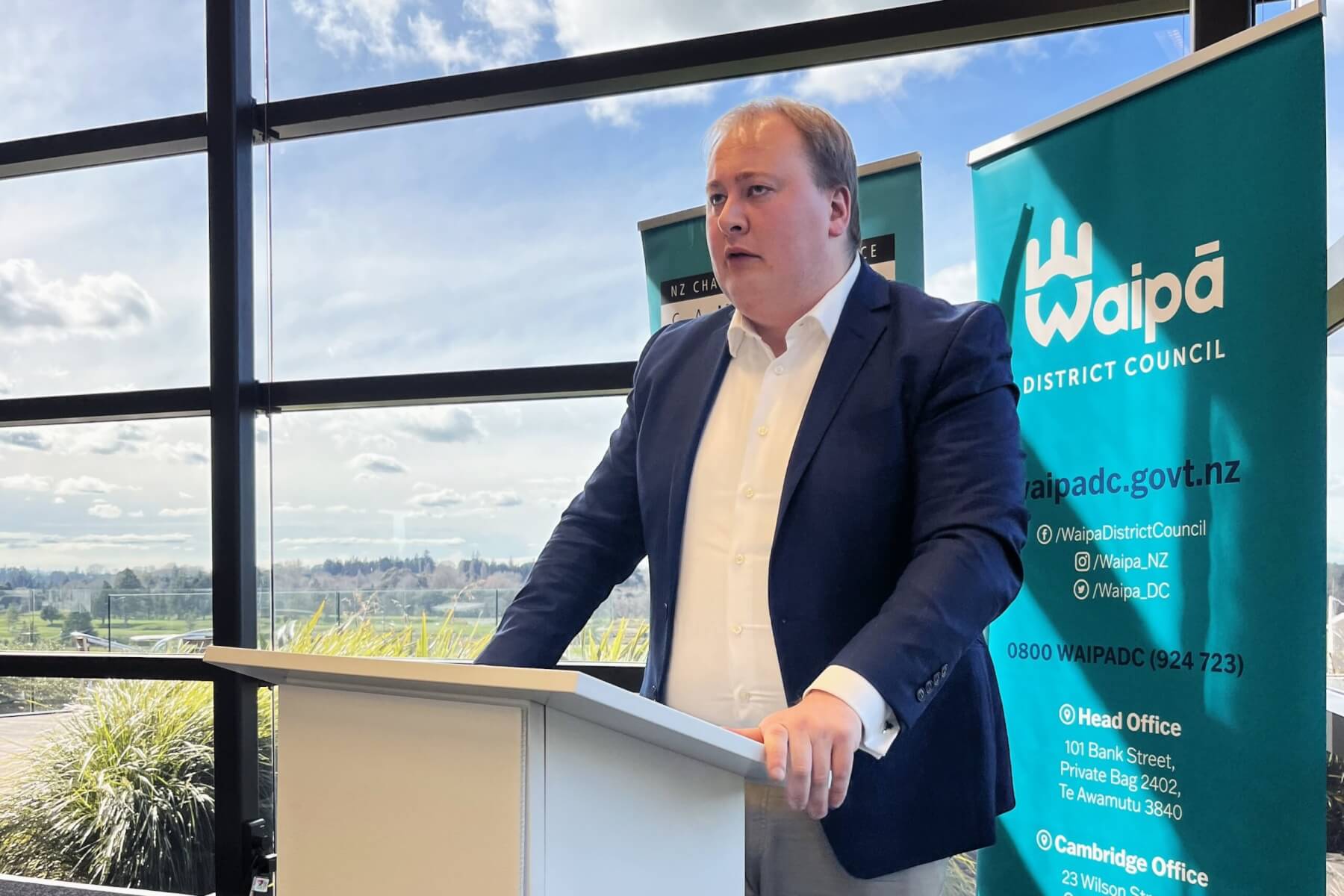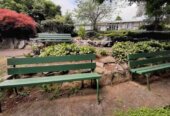Despite global and national economic pressures continuing to impact Waipā, the region is still performing better across some measures than many others in New Zealand, says leading economist Brad Olsen.

Brad Olsen, with Waipā mayor Susan O’Regan, centre, and Cambridge Business Chamber chief executive Kelly Bouzaid before last week’s event at Mystery Creek. Photo by Viv Posselt
Business growth is stronger here than it is nationally, and even as stiff competition remains in place for the household and business dollar, Waipā remains one of the better performing regions in terms of spending levels.
Successful marketing is working its magic, attracting more people to the region to live, and while house sales in Waipā are still below what they were at the start of the Covid pandemic, they are trending slightly above the national average.
Olsen said another regional plus is Waipā’s school attendance figures which rank higher than the national average.
“Nationally, fewer than 55 per cent of students attend school at least 90 per cent of the time,” he said. “If you don’t have people going to school consistently, it will be difficult to create the sort of outcomes that lead to positive development in the future.”
Olsen spoke to the question ‘Green Shoots in 2025?’ at a Cambridge Business Chamber event held at the New Zealand National Fieldays Society’s Mystery Creek headquarters. Among over 65 attendees were Waipā mayor Susan O’Regan.
At one point during his talk, Olsen said he had ‘some sympathy’ for local councils who are facing the same economic constraints currently impacting businesses and households, but who are trying at the same time to upgrade old infrastructure or provide new infrastructure for growing populations.
He said there was no way to sugarcoat the challenges being faced nationally and internationally. Spending levels have dropped to their lowest since the 1970/80s, and inflation, while improving slightly, is still too high and too slow to recover.
Because of global pressures, including shipping costs and consumer inflation, those handling budgets across businesses, households and other organisations are generally redeploying some 20 per cent of their normal spend to meet cost pressures in other areas.
Construction has overtaken the primary sector as Waipā’s largest employer for the first time in about 24 years, Olsen said. Next on the list is agriculture/forestry, fishing, manufacturing then retail.
In terms of housing, he said it was currently a buyers’ market but the buyers’ pool was not large at the moment as people delayed spending at that level.
“Sales here have come up a bit more than the national average but are still below what they were at the start of the pandemic. We think it could take until 2029 for house prices to get to the peak we saw in 2021.”
Olsen said Waipā was proving to be more resilient than many other parts of the country, but it was unlikely there would be any real momentum seen in the economy before 2025.
“Right now, there are green shoots, but they remain under frozen ground. We expect to see things improve next year … that is when those green shoots are likely to emerge.”

Brad Olsen talking to business leaders at Mystery Creek last week. Photo by Viv Posselt








